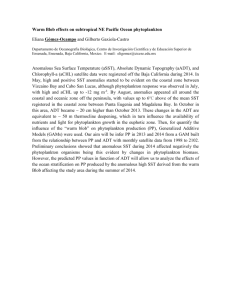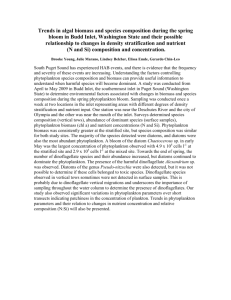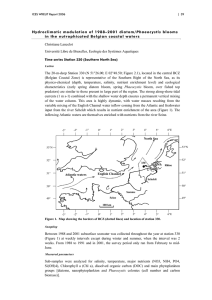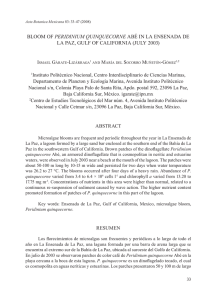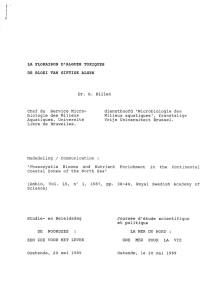HPLC-pigment fingerprinting for long-term monitoring of coastal phytoplankton
advertisement
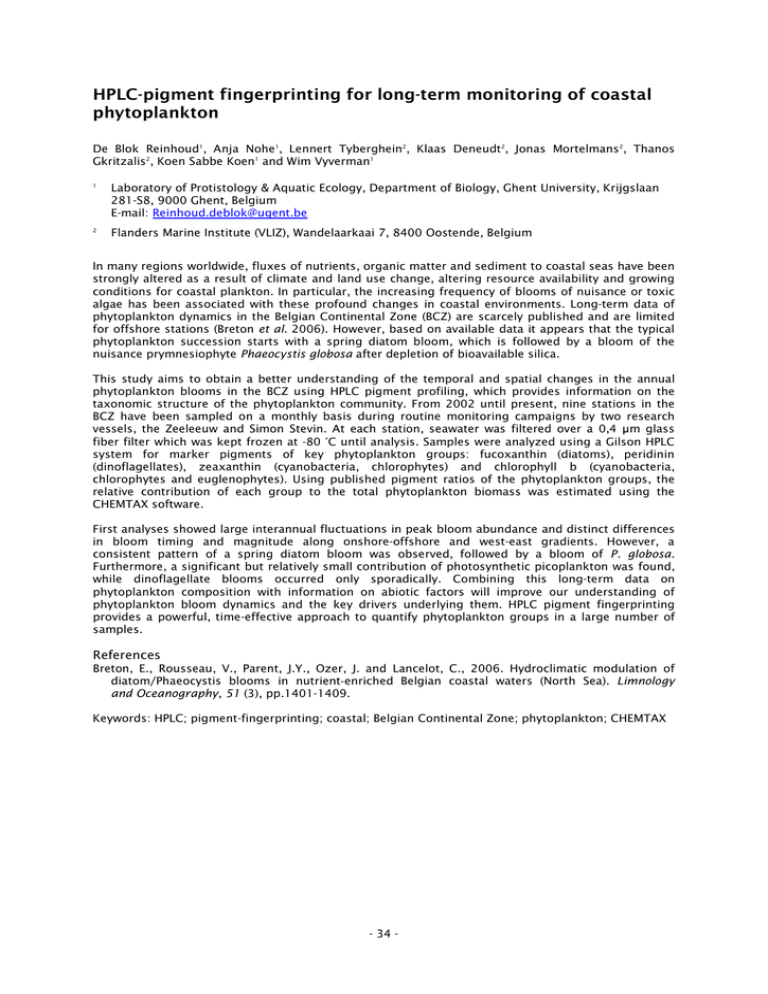
HPLC-pigment fingerprinting for long-term monitoring of coastal phytoplankton De Blok Reinhoud1, Anja Nohe1, Lennert Tyberghein2, Klaas Deneudt2, Jonas Mortelmans2, Thanos Gkritzalis2, Koen Sabbe Koen1 and Wim Vyverman1 1 Laboratory of Protistology & Aquatic Ecology, Department of Biology, Ghent University, Krijgslaan 281-S8, 9000 Ghent, Belgium E-mail: Reinhoud.deblok@ugent.be 2 Flanders Marine Institute (VLIZ), Wandelaarkaai 7, 8400 Oostende, Belgium In many regions worldwide, fluxes of nutrients, organic matter and sediment to coastal seas have been strongly altered as a result of climate and land use change, altering resource availability and growing conditions for coastal plankton. In particular, the increasing frequency of blooms of nuisance or toxic algae has been associated with these profound changes in coastal environments. Long-term data of phytoplankton dynamics in the Belgian Continental Zone (BCZ) are scarcely published and are limited for offshore stations (Breton et al. 2006). However, based on available data it appears that the typical phytoplankton succession starts with a spring diatom bloom, which is followed by a bloom of the nuisance prymnesiophyte Phaeocystis globosa after depletion of bioavailable silica. This study aims to obtain a better understanding of the temporal and spatial changes in the annual phytoplankton blooms in the BCZ using HPLC pigment profiling, which provides information on the taxonomic structure of the phytoplankton community. From 2002 until present, nine stations in the BCZ have been sampled on a monthly basis during routine monitoring campaigns by two research vessels, the Zeeleeuw and Simon Stevin. At each station, seawater was filtered over a 0,4 µm glass fiber filter which was kept frozen at -80 °C until analysis. Samples were analyzed using a Gilson HPLC system for marker pigments of key phytoplankton groups: fucoxanthin (diatoms), peridinin (dinoflagellates), zeaxanthin (cyanobacteria, chlorophytes) and chlorophyll b (cyanobacteria, chlorophytes and euglenophytes). Using published pigment ratios of the phytoplankton groups, the relative contribution of each group to the total phytoplankton biomass was estimated using the CHEMTAX software. First analyses showed large interannual fluctuations in peak bloom abundance and distinct differences in bloom timing and magnitude along onshore-offshore and west-east gradients. However, a consistent pattern of a spring diatom bloom was observed, followed by a bloom of P. globosa. Furthermore, a significant but relatively small contribution of photosynthetic picoplankton was found, while dinoflagellate blooms occurred only sporadically. Combining this long-term data on phytoplankton composition with information on abiotic factors will improve our understanding of phytoplankton bloom dynamics and the key drivers underlying them. HPLC pigment fingerprinting provides a powerful, time-effective approach to quantify phytoplankton groups in a large number of samples. References Breton, E., Rousseau, V., Parent, J.Y., Ozer, J. and Lancelot, C., 2006. Hydroclimatic modulation of diatom/Phaeocystis blooms in nutrient‐enriched Belgian coastal waters (North Sea). Limnology and Oceanography, 51 (3), pp.1401-1409. Keywords: HPLC; pigment-fingerprinting; coastal; Belgian Continental Zone; phytoplankton; CHEMTAX - 34 -


